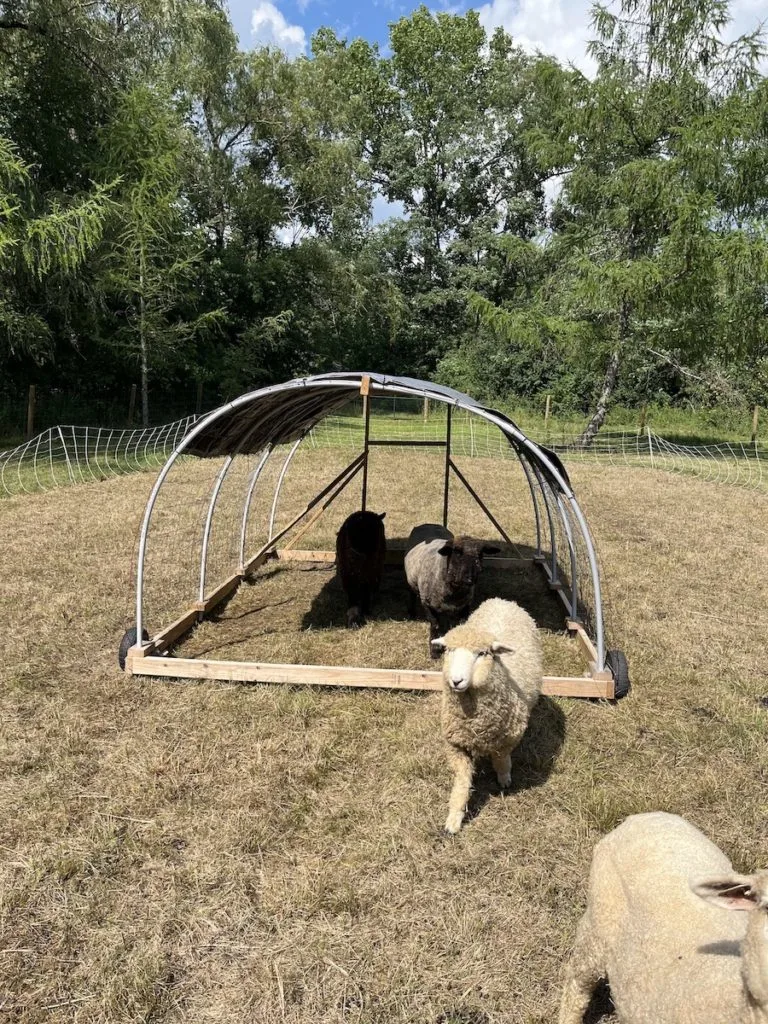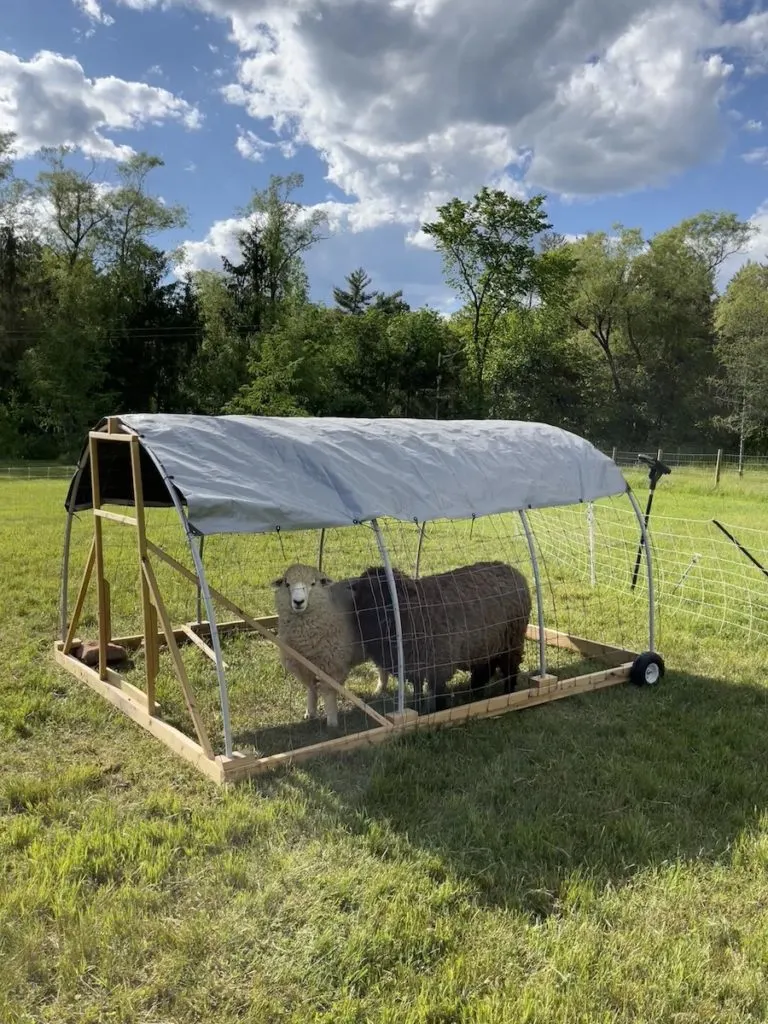
While we have a wonderful sheep barn we knew that in order to move the sheep around different parts of the pasture or even the yard we were also going to need a mobile sheep shelter. The sheep really appreciate the relief from the sun on the hottest days and it doesn’t hurt to be able to get out of the rain as well.
Some of the reasons we move the sheep around are to give parts of the pasture rest, in case of parasites and also to given them access to parts of the yard as a ‘treat’ of sorts. The barn itself has been working out great for their time in the pasture and especially in the winter but we needed something we could easily move around with some electric netting to make mini-pastures.
What other options did we consider?
We had thought about building something more like a shed roof on skids that we could pull around with a garden tractor. Unfortunately we don’t have a full sized tractor with forks otherwise I would consider building smaller shelters like these ones from The Modern Day Settler. I like how low they are for not getting flipped over in the wind but I worry that our fat sheep wouldn’t fit, heh.
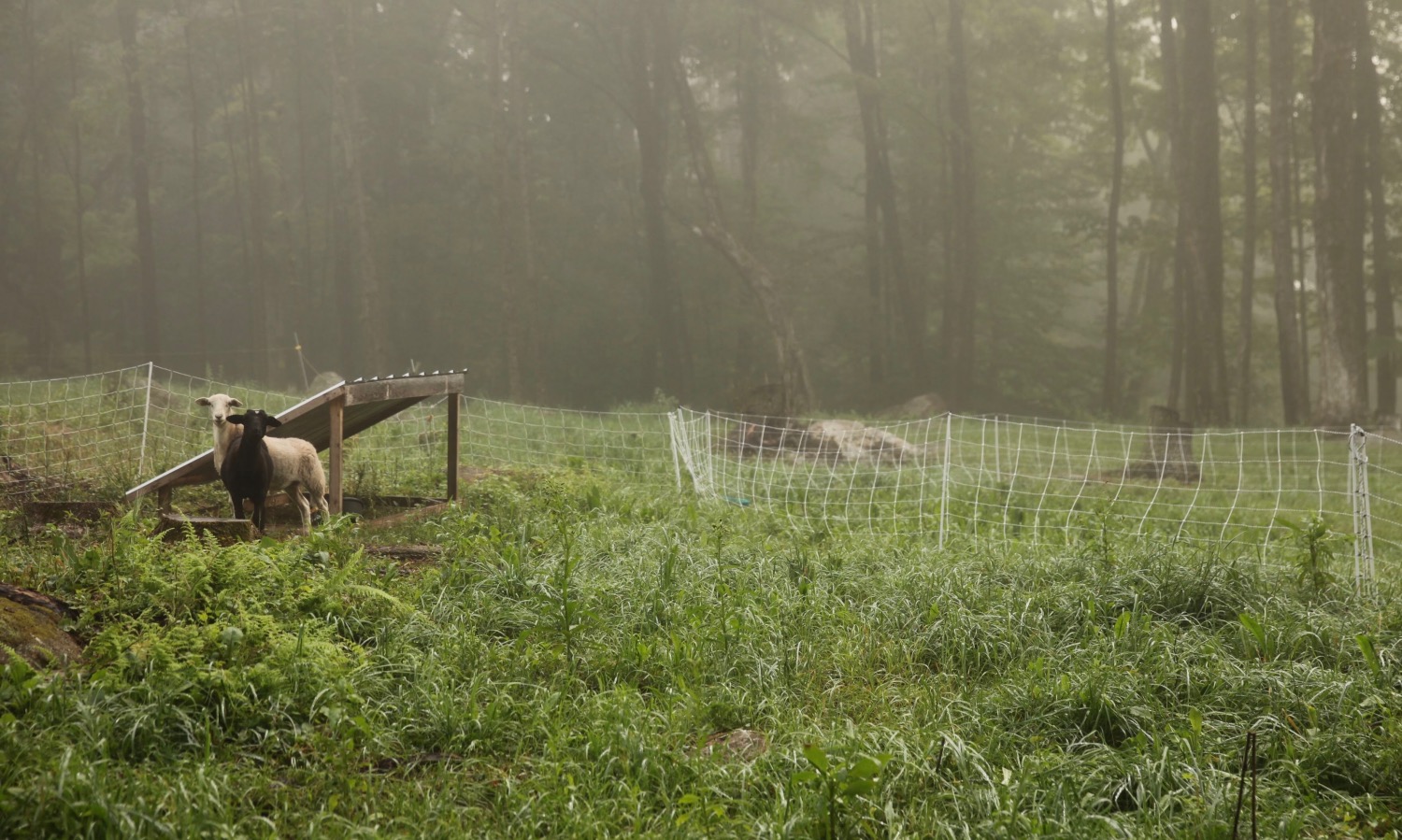
Materials and tools needed for a mobile sheep shelter
Materials needed:
- 3/4″ PVC conduit – 6 @ 10′
- Treated 2×4 – 3 @ 10′, 3 @ 8′
- Treated 2×2 – 4 @ 8′
- Wheels – 2 (we used 10″ never flat wheels from Tractor Supply)
- 5/8″ bolts – 8″
- 5/8″ washers and nuts
- Deck screws
- 1/2″ rope – 8′
- 10′ x 8′ heavy duty tarp
- 48″ fencing
- zip ties
Tools needed:
- Cordless drill
- 1 1/4″ drill bit
- 5/8″ drill bit
- Cordless driver
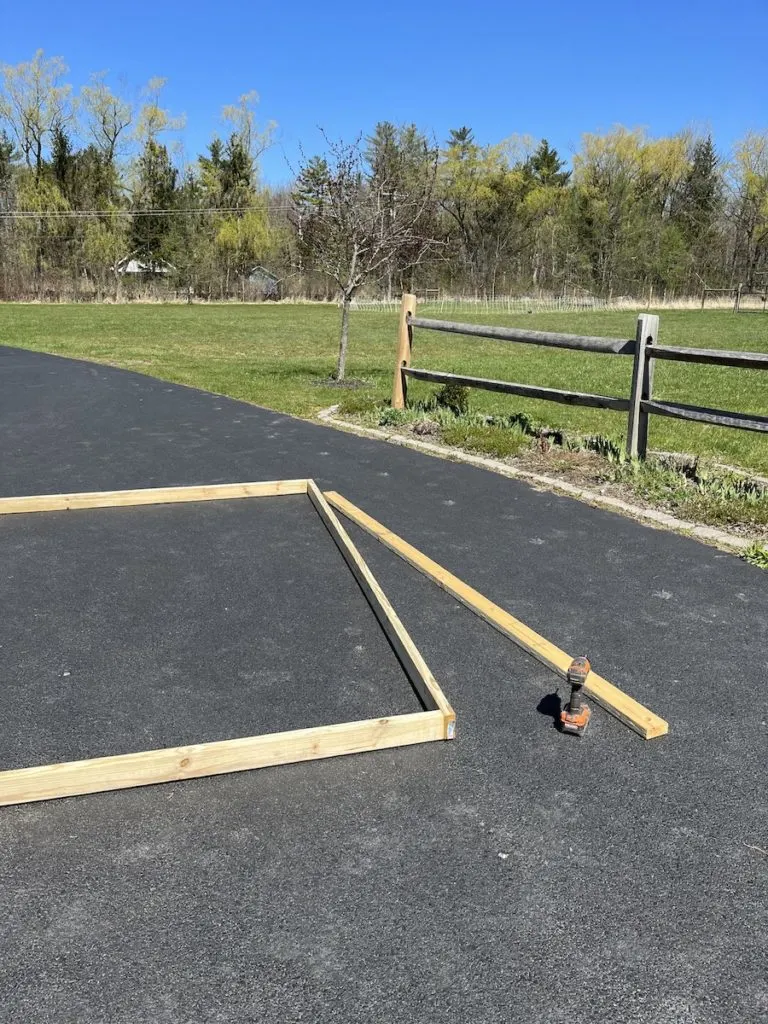
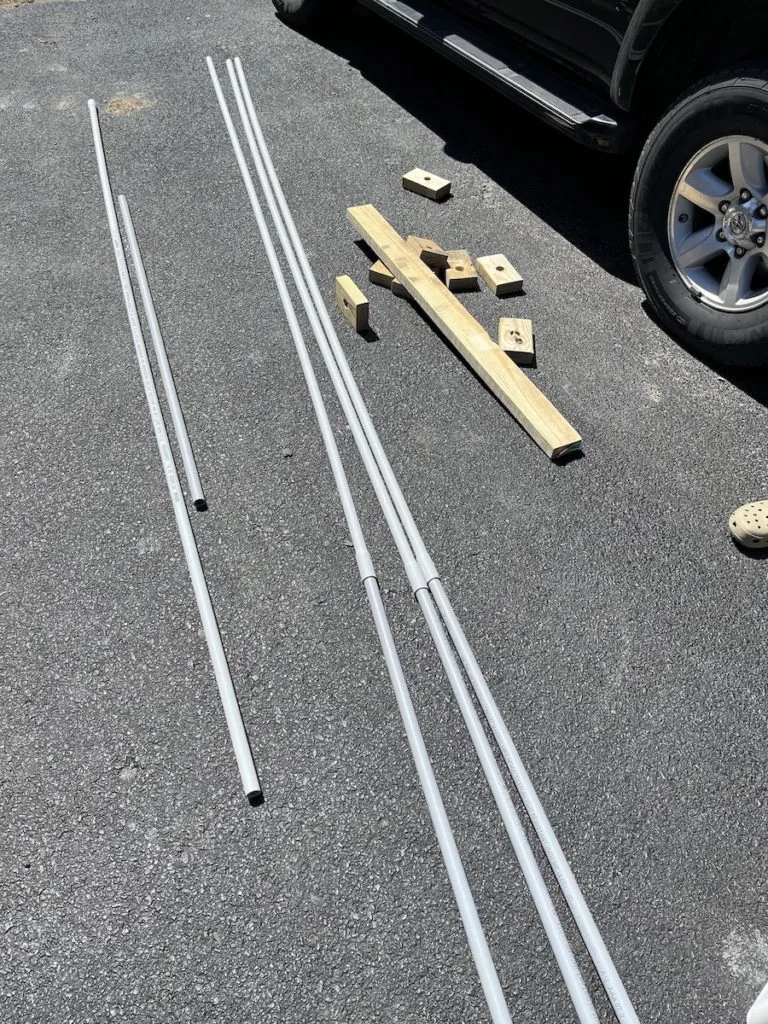
Assembly instructions for the mobile sheep shelter
Two of the ten foot 2x4s form the long sides of the base. The eight foot 2x4s run between the two sides with screws going through the sides into them. The ten foot last ten footer will be the ridge beam (of sorts) getting four equally spaced holes of 1 1/4″ diameter. Two of the six pipes need to be cut in half and have their joint removed. Those four halves should be glued in to extend the other four full pipes to make four roughly 15′ pipes. On each of these pipes make mark in the middle at roughly seven and half feet.
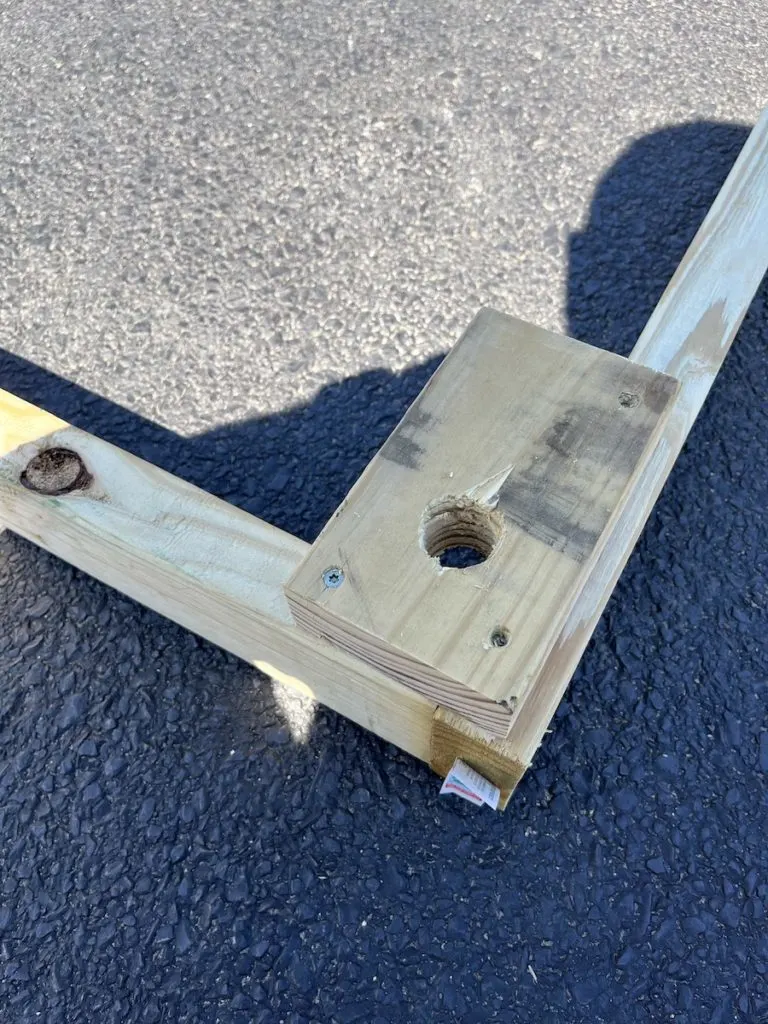
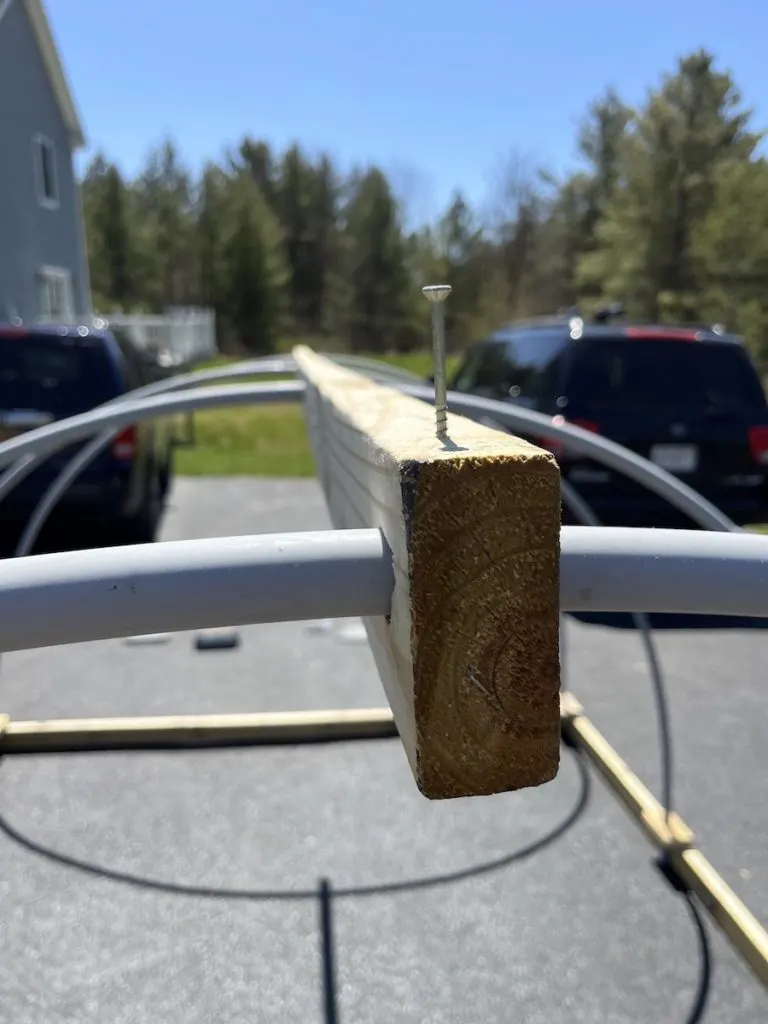
For the attachment of the pipes to the base, cut the last eight foot 2×4 into eight roughly 6″ pieces with a 1 1/4″ hole in each. The pipes are then put through the ridge beam and then set into the support holes. Each pipe is screwed into the base, making sure they don’t extend below the base. If the pipes extend too far down they will constantly be catching things when the shade is moved. Using the middle marks screw the ridge beam to each of the pipes.
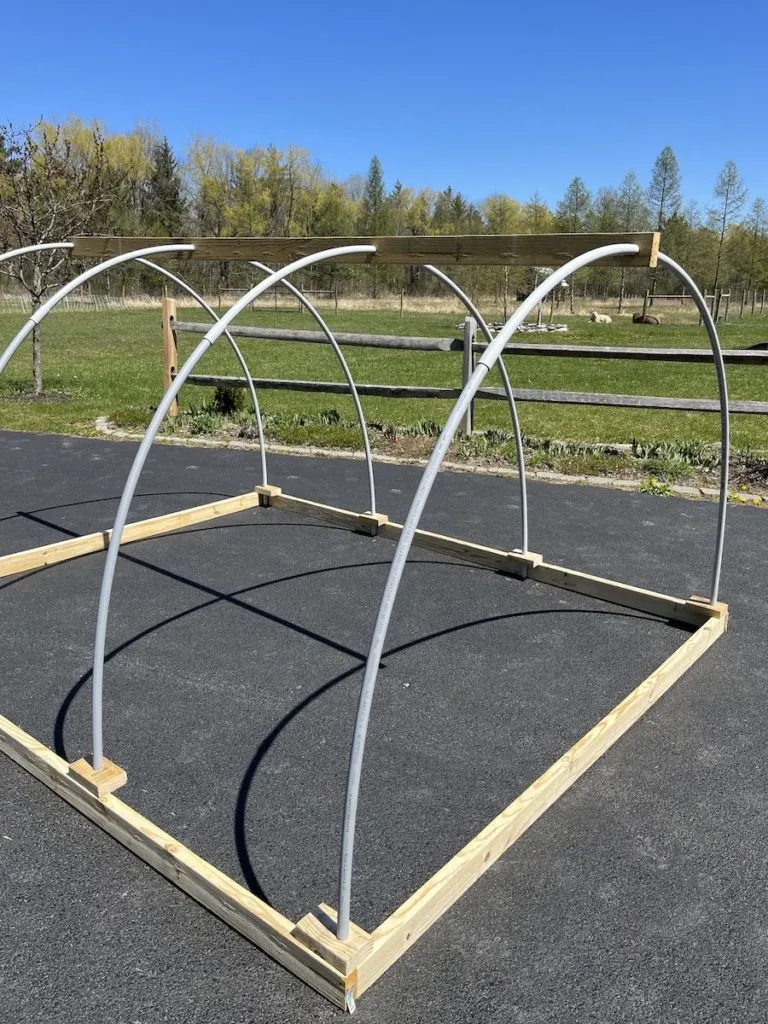
The basic frame is complete. At this point I built a rather elaborate set of handles and frame on the end and well… I don’t recommend it. I based the design originally off of a chicken tractor and greatly underestimated our sheep’s love of rubbing against this. They snapped off the first handle in a day and the next one didn’t fair much better.
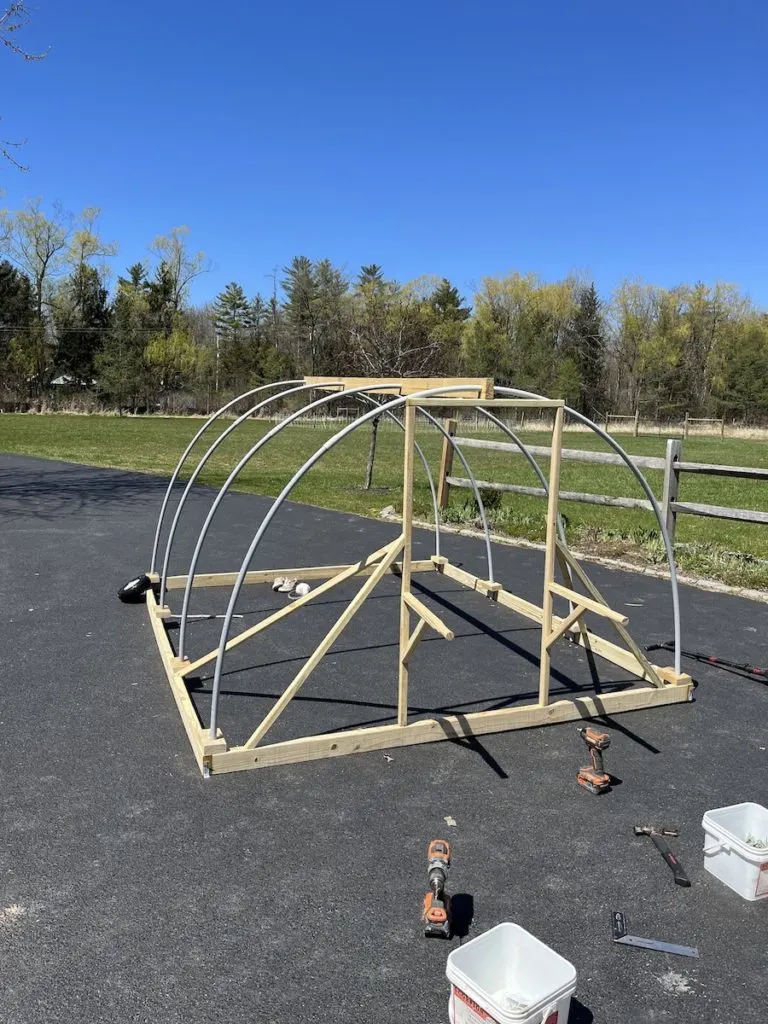
For the wheels I added more of the last 2×4 to the ends and chamfered a 2×2 on the bottom of it to protect the sheeps delicate little legs from catching on the bolt. Using the 5/8″ drill bit I drilled through both of the pieces and attached the wheels with the bolts, washers and nuts.
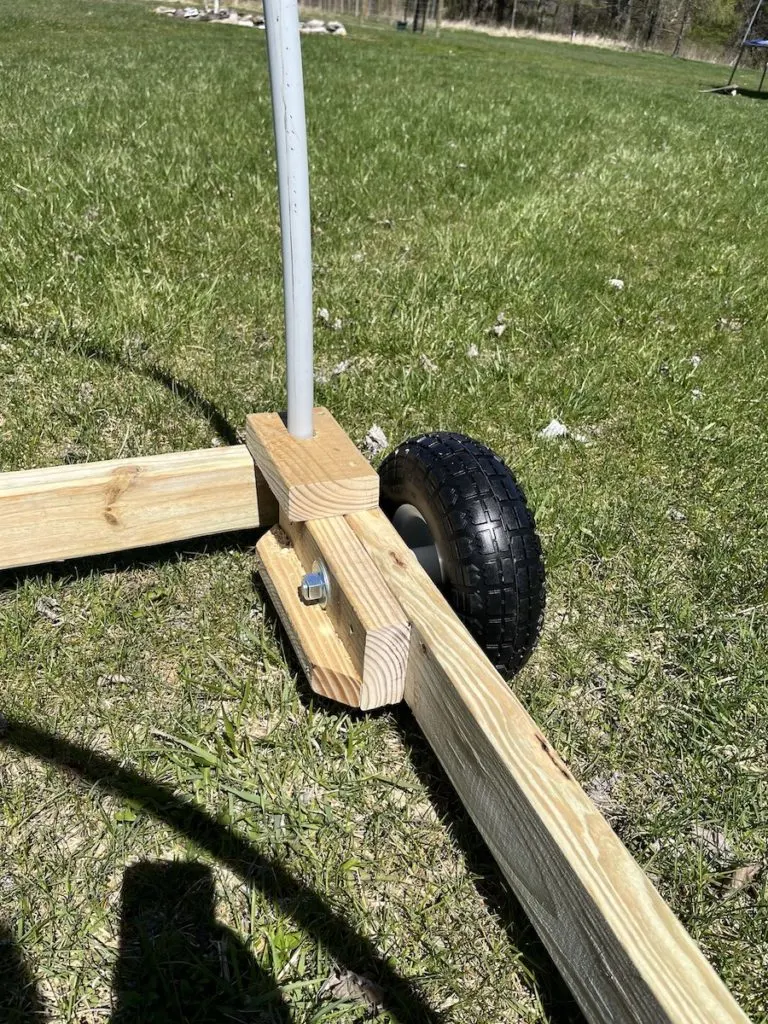
What about the rain?
To protect from the rain and provide actual shade (otherwise this is an expensive and useless waste of time) I added some left over pasture fencing over the pipes and attached it with zip ties to the pipes and staples to the frame. I ended up using a mix of sturdy 4′ pasture fencing and 32″ garden fencing because that is what we had on hand. It doesn’t need to hold much weight or provide any protection per say. All it needs to do is support the tarp that is also zip tied to the fencing.
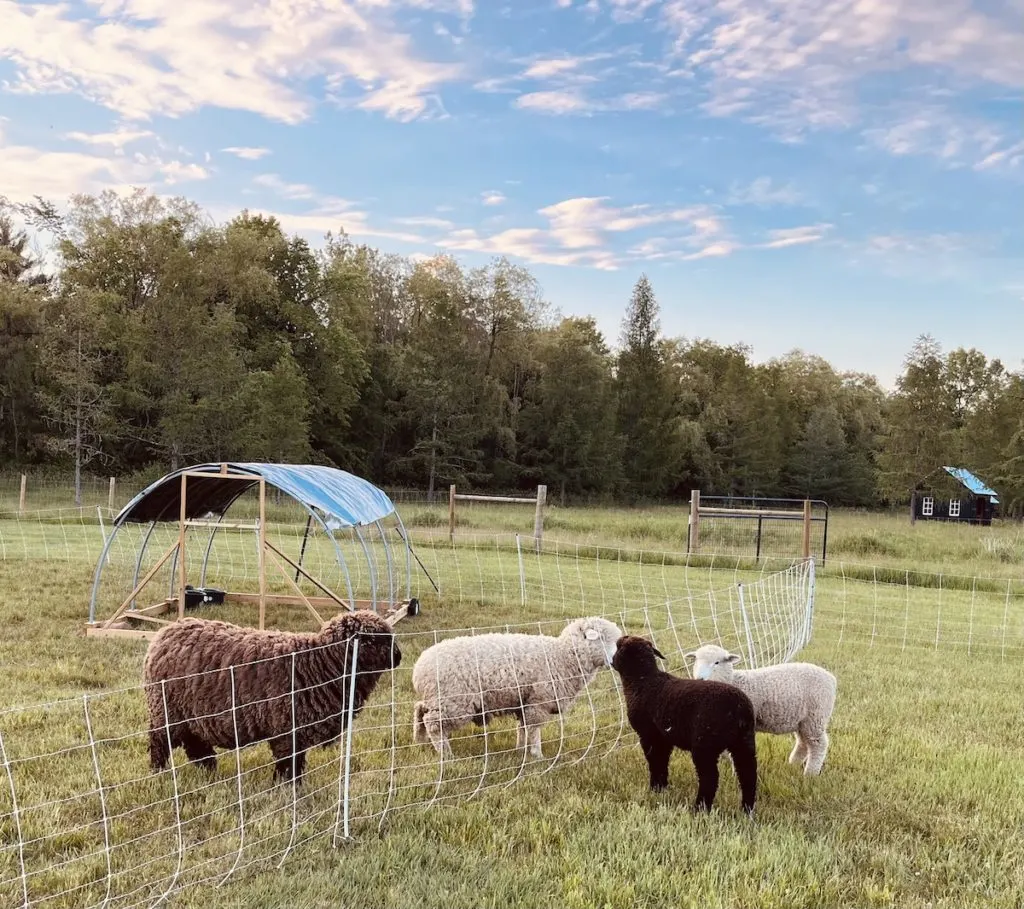
What about the wind?
One of the important considerations for this mobile sheep shade is that I didn’t want it to lift off in wind storms. Or worse get flipped over onto the sheep, fence or any of my kids who don’t have the good sense to come in out of a storm. In order to stop that I made sure the ends are left open so air can’t get caught in the shelter, and left the sides short so that wind can pass through instead of catching the sides.
Putting the “mobile” in mobile sheed shelter, aka, how do we move it?
After the sheep so rudely snapped off my wonderful handles I had to come up with a different method for moving it. The easiest way to move it is to hook the frame over a tractor hitch on our garden tractor which honestly works better than I expected. For times when I don’t feel like dragging out the tractor I added a rope drilled through the base that can be used to lift the non-wheel end and pull. It works fine for moving it a couple yards. After dragging it across the entire pasture though I defintely regretted not just getting the tractor though.
